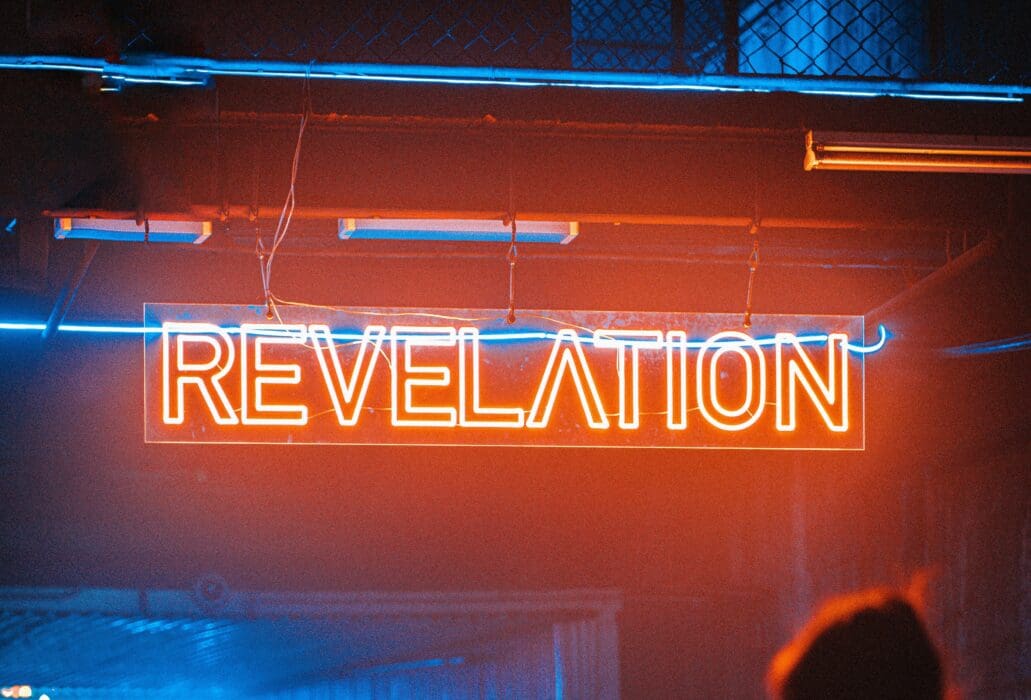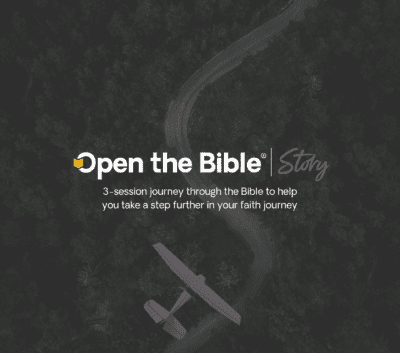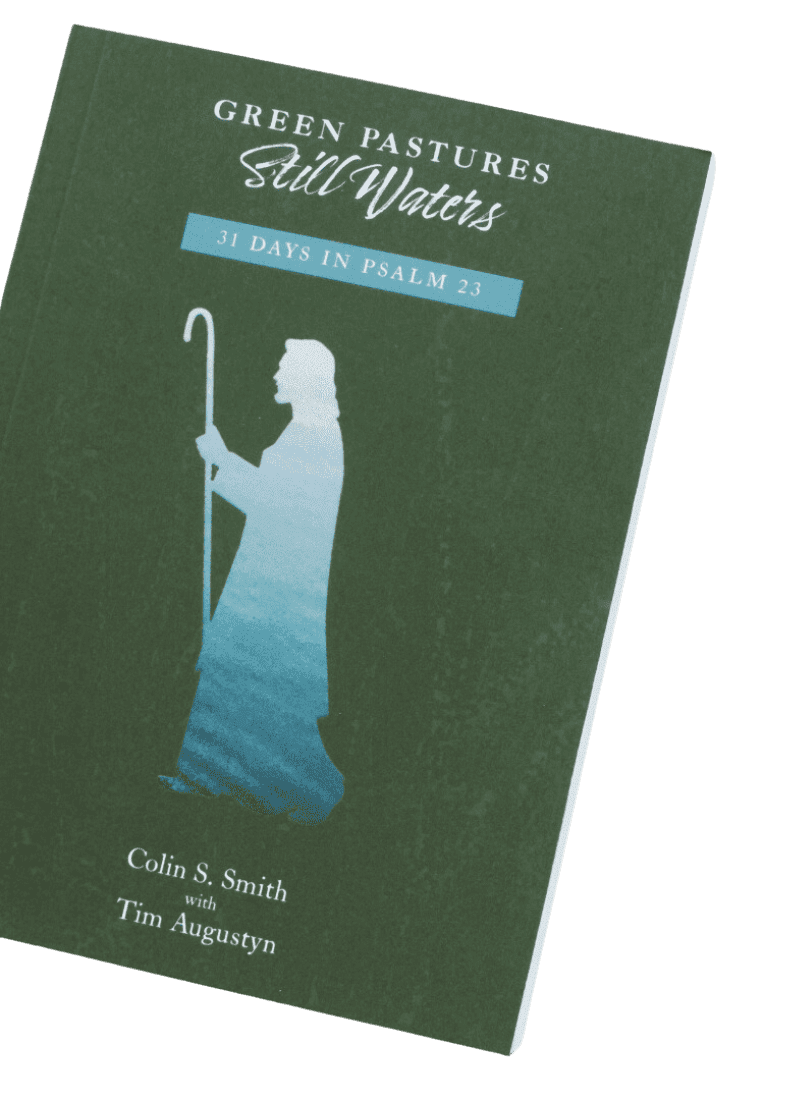Confession: I have struggled to read the book of Revelation. I’ve had seasons where the more effort I put into studying it, the less I understand what it’s saying or why it matters for my walk with Christ.
I can point to a few reasons for this: strange interpretations that haphazardly connect Revelation’s symbols to current day events[1], myriads upon myriads of charts and views regarding the book, and perhaps most importantly, my own poor reading skills.
Maybe you’ve had a similar experience.
The temptation is to write off the book as impossible to understand and thus keep it closed. But doing so comes with significant loss. We understand why as we read the extraordinary promise in the book’s third verse:
Blessed is the one who reads aloud the words of this prophecy, and blessed are those who hear, and who keep what is written in it, for the time is near. (Revelation 1:3)
How do we reach this blessing? As I’ve grown as a reader of Revelation, I’ve found the seven suggestions below invaluable.
7 Tips for Reading the Book of Revelation
1. Consider the Original Audience.
The Apostle John wrote Revelation to encourage the embattled first-century church. That means that when Revelation was read aloud to the churches (1:3), everyday believers—without advanced theology degrees or fancy interpretations—were expected to understand and apply the message as God intended. If they could hear and keep that message back then, so can we today.
2. Make Good Observations.
A mistake we make in Bible study is jumping to questions or curiosities or applications without first reading the text carefully. Here are a few pointers to keep you focused on the text:
- Ask yourself, What is the text actually saying? Fight the urge to turn to study notes or a commentary before reading and thinking carefully.
- Note key repetitions. The repetitions of blessing, patient endurance, the throne of God (that refers to God’s sovereignty over history), repentance, and “the one who conquers” are all central to the message of Revelation. Consider underlining or highlighting these key repetitions to help yourself in future readings of the book.
- Note contrasts. To name a few, Revelation contrasts heaven and earth, good and evil spiritual beings, God’s people and the rebellious world. As you notice contrasts, ask yourself What is their intended effect?
As I’ve grown in my observation skills, I’ve found that re-reading books of Scripture helps me see what the text is actually saying.
3. Understand the Basics of Apocalyptic Literature.
Revelation is an amalgam of genres: in addition to being a book of prophecy (1:3) and an epistle (1:4), Revelation is apocalyptic. Some even call the book “The Apocalypse of John.” The word ‘Apocalypse’ simply means ‘a revealing’ in Greek. Revelation’s message is not intentionally veiled from readers, as if God wanted to trick us. Look at the first words of the book: “The revelation [or apocalypse] of Jesus Christ, which God gave him to show to his servants the things that must soon take place. He made it known…” (1:1, emphasis mine). This revelation serves a special purpose: to give a “heavenly perspective on our earthly circumstances so that every generation of God’s people can be challenged, comforted, and given hope for the future.”[2]
Apocalyptic literature isn’t concerned about giving an exact chronological timeline and often will repeat the same events from different angles. (Because of that, I’d encourage you to make what’s clear in the text your focus, not figuring out a timeline.)
Apocalyptic literature is filled with symbols and images. Revelation mentions many like seals, trumpets, bowls, beasts, women, seven hills, the mark of the beast, and more. When John gives us the meaning of a symbol (see Revelation 1:12, 20 and Revelation 12:9 for example), pay attention, that makes our job of interpretation easier!
Clues for interpreting symbols may come from other parts of Scripture. Many of Revelation’s beasts, colors, and numbers find their meaning first in other portions of Scripture.[3] (A Bible with a cross-reference system or a study Bible can help you here.) Other clues may come from a good understanding of the original audience. For instance, original readers would likely read the reference to “seven hills” in Revelation 17:9 and immediately think of the seven hills of ancient Rome. (A study Bible can help you on this point.)
If your head is spinning… don’t worry! The next point will encourage you.
4. Focus on the Main Message and Don’t Get Bogged Down in Details.
Part of the challenge of Revelation is the myriad of confusing details. Why does the first beast in Revelation 13 have ten horns and seven heads? When will the bowls of judgment be poured out? Who is the anti-Christ? Did I accept the mark of the beast by failing to read terms and conditions on that one website? We easily lose the forest for the trees with such questions. Keeping the book’s main idea always in mind will keep us focused on what’s most important.
Here’s a suggested main idea: The risen Christ calls His people to faithful endurance amidst fiery trials as He judges His enemies and brings His everlasting Kingdom to fruition. That’s a mouthful, so consider this two word alternative: Jesus wins.
As you read each section of the book, do your best to answer the questions How does this relate to/develop the main idea? And What is Christ calling me to?
5. Appreciate the Old Testament’s influence on Revelation.
Revelation brings the story of the Bible to a close.[4] Just like the end of any epic story, key threads get resolved and come to fulfillment. (If you’re a movie buff, you may compare this to the last movie of an epic series that shares Easter eggs to previous episodes along the way.)
By some counts, Revelation alludes to the Old Testament over 500 times.[5] That means to understand Revelation as it was written, we’ll do better by putting down the newspaper and picking up the Old Testament!
You’re never going to plumb the depth of Revelation’s use of the Old Testament, but recognizing references to will can sweeten your experience in reading the book and your overall appreciation for the glorious unity of the Bible.
Here’s a starter pack of Old Testament passages to add depth to your reading:
- Genesis 1–3 – To understand any story well, you need to know how it starts and how it ends. Read Genesis 1–3 and then Revelation 21–22, noting similarities and differences between them. For example, in Genesis 1 we see God creating the heavens and earth in Genesis, while Revelation 21 ushers in a new heaven and new earth. We see the curse of sin enter God’s perfect creation in Genesis 3, and we see no more curse in Revelation 22:3. Grasp the threads that connect the bookends of the Bible and you’ll have a good idea what the 1,184 chapters between them are about. You’ll also have a greater appreciation for the person and work of Jesus Christ who is the focus of the Scriptures (Luke 24:44).
- Exodus 7–13 – Revelation has echoes of the plagues on Egypt throughout the book (for an example, see the Bowl Judgments of chapter 16). In Revelation, Jesus is repeatedly called “the lamb that was slain” (Revelation 5:12), an image that originated in the Passover meal of Exodus 12. In Exodus, God flexed His sovereign muscles in dramatic fashion when He judged His enemies and saved His people by the blood of the lamb. He’s doing the exact same thing in Revelation.
- Psalm 2 – The image of Christ dashing the nations to pieces with a rod of iron comes up several times in Revelation (2:27, 12:5, 19:15) and reminds readers of who is really in charge when the nations rage against God and His anointed Christ.
- Daniel 7 – John draws heavily from the prophetic portion of the Old Testament, specifically the books of Daniel, Zechariah, Ezekiel. Perhaps no chapter from this portion of Scripture stands at the backdrop of Revelation more than Daniel 7. In the chapter, Daniel sees a night vision of four beasts and also “one like a son of man” (Daniel 7:13) who was given dominion and an eternal kingdom “that all peoples, nations, and languages should serve him” (Daniel 7:14). Sound familiar? 🙂
6. Savor the Power and Glory of Jesus Christ.
From beginning to end, Revelation presents a glorious picture of the Lord Jesus Christ. In chapter one, Jesus is “one like a son of man”, a majestic figure holding the keys to death and Hades (Revelation 1:18). He has eyes like flames of fire, feet like polished bronze, and a voice like rushing waters, emphasizing His divine authority and glorious presence. In chapter five, He is the conquering Lamb who was slain and the only One worthy to open the scroll and break its seals. The rest of the book calls Jesus the conqueror of sin and death, the Alpha and Omega, the King of kings and Lord of lords, the Bright and Morning Star of a new and glorious era, the judge of the living and the dead, and the Rider on the white horse who will return in glory to reign forever.
As you grasp who Jesus is and apply His Lordship to your life and struggles in this world, you’ll be able to join the great multitude of heaven crying out,
“Worthy is the Lamb who was slain, to receive power and wealth and wisdom and might and honor and glory and blessing!” (Revelation 5:12)
7. Set Your Hope in God and Your Glorious Future.
If you’ve ever faced discouragement thinking about wars, famines, pandemics, and the increasing evil in our world, Revelation is for you. Revelation lifts our eyes from our troubled world to the God who sovereignly rules everything and who will one day rid the world of all evil and pain, bringing us to our heavenly home forever.
Far from being a confusing or scary book, Revelation is a profoundly comforting one. It unveils our glorious future that is free from the presence of sin, pain, and death, and blessed in the presence of Jesus Christ.
And I heard a loud voice from the throne saying, “Behold, the dwelling place of God is with man. He will dwell with them, and they will be his people, and God himself will be with them as their God. He will wipe away every tear from their eyes, and death shall be no more, neither shall there be mourning, nor crying, nor pain anymore, for the former things have passed away.” (Revelation 21:3-4)
The Most Difficult (and Blessed) Part of Revelation
While this article should give you practical help for reading Revelation, you’ll still have lots of questions. I know I still do! But remember, according to Revelation 1:3, the true challenge of Revelation is not in what we don’t understand, but in keeping what we do understand.
As we live and suffer for Christ in our world, have we “loved not [our] lives even unto death” like the conquering saints (Revelation 12:11)? Are we holding fast to Christ even when the world tells us to reject Him and trust people, possessions, pleasure, or politicians?
Whatever our answer, we have the presence and power of our risen Savior by our side. He can help us hear and keep the message of Revelation until He calls us home or returns in glory. Until then, let’s keep our eyes fixed on Him, and let’s keep reading Revelation.
—
[1] G.K. Chesterton once said: “And though St. John saw many strange monsters in his vision, he saw no creature so wild as one of his own commentators.”
[2] From the Bible Project video “How to Read the Bible: Apocalyptic Literature” accessed at https://www.youtube.com/watch?v=UNDX4tUdj1Y.
[3] To learn more, read “Numerical Symbolism in the Book of Revelation” by Michael Kuykendall. https://www.thegospelcoalition.org/themelios/article/numerical-symbolism-in-the-book-of-revelation/
[4] Dr. Brian Tabb calls Revelation a “Canonical Capstone” in the title of his book All Things New: Revelation as Canonical Capstone (New Studies in Biblical Theology).
[5] John seeped his writing in Old Testament language and images for a few reasons: one being the Old Testament shaped his worldview and gave him language, a second being that he had visions of the same things that Old Testament prophets saw, so it makes sense he’d describe everything similarly.








